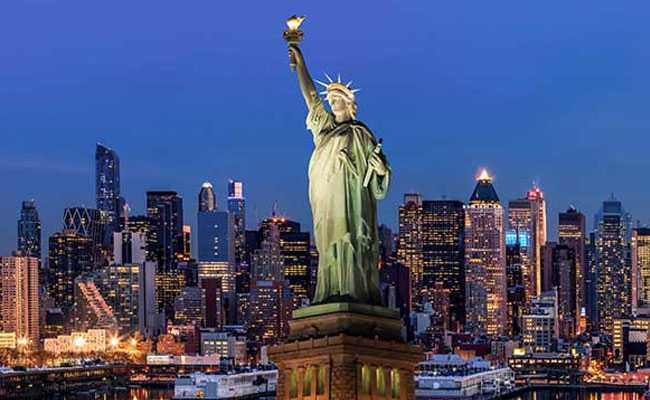The US is on Track to Grant More Than 1 Million Visas to Indians This Year The United States and India have long shared a multifaceted relationship marked by strong economic, cultural, and strategic ties. In 2023, this bond is set to reach a new milestone as the U.S. is on track to grant more than 1 million visas to Indian nationals. This unprecedented figure highlights the growing interdependence between the two nations and underscores the significant contributions of the Indian diaspora to American society.
Historical Context: The Evolution of US-India Relations
Early Interactions and Post-Independence Ties
The relationship between the United States and India dates back to the early 19th century, with initial contacts primarily centered around trade. However, it wasn’t until India gained independence from British colonial rule in 1947 that formal diplomatic relations were established. In the subsequent decades, the relationship evolved amidst the backdrop of the Cold War, with India adopting a non-aligned stance and the U.S. often viewing it through the prism of its rivalry with the Soviet Union.
Economic Liberalization and Strategic Partnership
The end of the Cold War and India’s economic liberalization in the early 1990s marked a turning point in US-India relations. The opening up of the Indian economy attracted significant American investment and fostered deeper economic ties. The landmark visit of President Bill Clinton to India in 2000 and the subsequent visits by Indian Prime Ministers to the U.S. further solidified this growing partnership.
In the 21st century, the relationship has been characterized by a strategic partnership encompassing defense, technology, and counterterrorism cooperation. The signing of the U.S.-India Civil Nuclear Agreement in 2008 was a testament to the deepening trust and collaboration between the two nations.
Visa Trends: A Closer Look
The Surge in Visa Issuances
The significant rise in the number of visas issued to Indian nationals can be attributed to multiple factors, including the burgeoning Indian middle class, the expansion of the IT and tech sectors, and the increasing number of Indian students pursuing higher education in the U.S. In recent years, this trend has only accelerated, reflecting the deepening ties between the two countries.
In 2023, the U.S. is on track to grant over 1 million visas to Indians, a figure that underscores the scale of people-to-people connections. This includes various categories of visas such as H-1B, student visas (F and M), tourist visas (B-2), and immigrant visas, among others.
Breakdown of Visa Categories
H-1B Visas
The H-1B visa program has been one of the most significant pathways for Indian professionals to work in the United States. Designed for skilled workers in specialty occupations, this visa has been a crucial element in the growth of the American tech industry. Indian nationals have consistently been the largest beneficiaries of the H-1B program, reflecting their dominance in fields such as IT, engineering, and medicine.
Student Visas
Indian students constitute one of the largest groups of international students in the U.S. The pursuit of higher education in prestigious American universities is a major draw, with thousands of Indian students enrolling in programs ranging from engineering and computer science to business and the humanities. The F-1 and M-1 visas are the primary categories under which these students enter the U.S.
Tourist and Business Visas
The B-2 visa for tourists and the B-1 visa for business visitors are also significant components of the visa landscape. With increasing disposable incomes and a growing interest in global travel, many Indians are visiting the U.S. for tourism, business, and family reunions.
Immigrant Visas
The U.S. has a substantial Indian-origin population, and family reunification is a major driver of immigrant visa applications. The diversity visa lottery and employment-based green cards are other pathways through which Indians obtain permanent residency in the U.S.
Factors Driving the Increase in Visa Issuances
Economic Growth and Middle-Class Expansion
India’s robust economic growth and the expansion of its middle class have been key drivers behind the surge in visa applications. With more disposable income, an increasing number of Indians are able to afford international travel, education, and business ventures.
Educational Aspirations
The United States is home to many of the world’s top universities, and Indian students are increasingly seeking to take advantage of the high-quality education these institutions offer. The long-term benefits of an American degree, including better job prospects and higher earning potential, are significant motivators.
Professional Opportunities
The demand for skilled professionals in the U.S., particularly in the tech sector, has driven many Indians to seek employment opportunities abroad. The H-1B visa program has been a critical avenue for these professionals, facilitating the exchange of talent and expertise between the two countries.
Family and Social Connections
The large Indian diaspora in the U.S. creates a strong pull factor for family reunifications and visits. Immigrant visas, including family-sponsored preferences, enable many Indians to join their relatives in America, strengthening social and familial bonds.
Challenges and Controversies
Visa Backlogs and Processing Delays
Despite the high number of visas being granted, the process is not without its challenges. Significant backlogs and processing delays have been a persistent issue, particularly for employment-based green cards and family-sponsored visas. These delays can cause uncertainty and hardship for applicants and their families.
Policy Changes and Immigration Reforms
U.S. immigration policies have seen significant changes over the years, influenced by political dynamics and economic considerations. Changes in H-1B visa regulations, caps on visa numbers, and shifting priorities in immigration policy can impact the flow of visas to Indian nationals. Advocates for reform often call for a more streamlined and predictable immigration system that can better accommodate the needs of skilled workers and their families.
Impact of COVID-19
The COVID-19 pandemic had a profound impact on global mobility, including visa issuances. Travel restrictions, lockdowns, and health concerns led to a significant drop in the number of visas issued in 2020 and 2021. As the world recovers from the pandemic, visa processing has gradually returned to normal, contributing to the projected surge in 2023.
The Economic and Cultural Impact of Indian Immigrants in the U.S.
Contributions to the Tech Industry
Indian professionals have made significant contributions to the U.S. tech industry, with many holding key positions in major companies such as Google, Microsoft, and Adobe. The entrepreneurial spirit of the Indian community has also led to the creation of numerous startups, driving innovation and job creation.
Academic and Research Excellence
Indian students and scholars have been prominent in American academia, contributing to research and development across various fields. Their presence enhances the intellectual and cultural diversity of American universities and research institutions.
Cultural Enrichment
The Indian diaspora has enriched American society with its cultural traditions, festivals, and cuisine. Events like Diwali and Holi are celebrated with enthusiasm across the U.S., promoting cross-cultural understanding and appreciation.
Economic Contributions
Indian immigrants play a vital role in the U.S. economy, not only through their professional achievements but also through their entrepreneurial ventures. Small businesses owned by Indian-Americans contribute significantly to local economies, and the community’s high rate of homeownership and educational attainment further underscores their economic impact.
Future Outlook
Strengthening Bilateral Ties
The projected increase in visa issuances to Indian nationals is a positive indicator of the strengthening ties between the U.S. and India. As both nations continue to collaborate on strategic, economic, and cultural fronts, the people-to-people connections facilitated by these visas will play a crucial role in deepening mutual understanding and cooperation.
Policy Considerations
To sustain and enhance this trend, both countries may need to consider policy measures that facilitate smoother and more efficient visa processing. This includes addressing backlogs, improving transparency, and ensuring that immigration policies are aligned with the evolving needs of the global economy.
Embracing Diversity
As the Indian diaspora continues to grow in the U.S., it is essential to embrace and celebrate this diversity. Policies and initiatives that promote inclusion and integration will be vital in ensuring that the contributions of Indian immigrants are fully recognized and appreciated.
The Role of Technology
Advancements in technology can also play a significant role in improving the visa application and processing system. From online applications to automated processing, leveraging technology can enhance efficiency and reduce waiting times for applicants.
Conclusion
The U.S. is on track to grant more than 1 million visas to Indian nationals in 2023, a milestone that reflects the deepening ties between the two nations. This trend is driven by various factors, including economic growth, educational aspirations, professional opportunities, and strong familial connections. While challenges such as visa backlogs and policy changes persist, the overall impact of this surge in visas is overwhelmingly positive.
Indian immigrants have made substantial contributions to American society, enriching its cultural fabric, driving economic growth, and advancing technological innovation. As the bilateral relationship continues to evolve, the people-to-people connections facilitated by these visas will remain a cornerstone of U.S.-India relations, fostering mutual understanding, collaboration, and prosperity for both nations.
The future of this dynamic partnership looks promising, with opportunities for further strengthening ties through policy reforms, technological advancements, and a continued commitment to embracing diversity. As the world becomes increasingly interconnected, the U.S. and India stand to benefit immensely from their close and enduring relationship.

